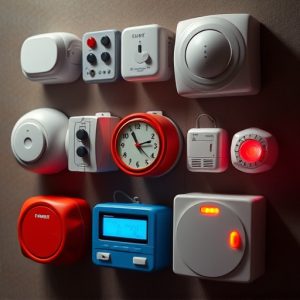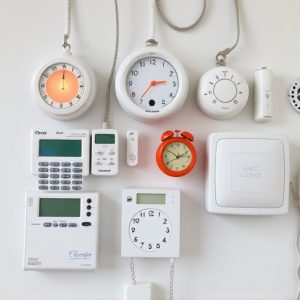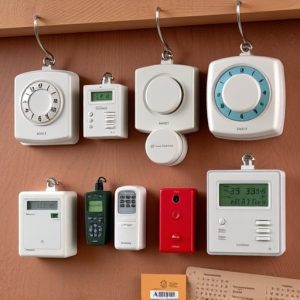Personal Safety Devices: Protecting You with Effective Alarms & Sound Coverage
Personal alarm devices, powered by distinct sound coverage areas, are essential tools for emergencie…….
Personal alarm devices, powered by distinct sound coverage areas, are essential tools for emergencies, enhancing security and deterring threats. With options catering to urban and remote environments, users can select devices based on specific needs, ensuring immediate assistance. Traditional and advanced models emit adjustable sounds, with GPS tracking expanding coverage from 50 to 200 meters. Understanding sound projection is crucial for optimal safety, as effective range varies by ambient noise, terrain, and weather. Local laws and best practices should be followed, keeping devices accessible and tested for functionality. These alarms have proven vital in emergency situations, quickly summoning help and preventing potential harm.
In today’s unpredictable world, personal safety is paramount. Understanding and utilizing the right devices can be a lifesaver in emergency situations. This article delves into the significance of personal safety devices, exploring various types like personal alarms with distinct features. We’ll guide you through evaluating crucial factors such as personal alarm sound coverage area for optimal effectiveness. Additionally, we’ll discuss legal considerations, best practices for carrying emergency devices, and real-world applications that highlight their power to prevent and mitigate risks.
- Understanding Personal Safety Devices: Why They're Essential
- Types of Personal Alarm Devices and Their Features
- Evaluating Sound Coverage Area for Effective Alarms
- Legal Considerations and Best Practices for Carrying Emergency Devices
- Real-World Applications: Stories of Success and Prevention
Understanding Personal Safety Devices: Why They're Essential
Personal safety devices are crucial tools for emergency situations, offering individuals a sense of security and empowerment. These devices, often portable and easy to use, emit a powerful personal alarm sound that can attract attention and deter potential threats. They provide immediate assistance in cases of distress, allowing users to signal for help from a safe distance.
The coverage area of these devices varies, with some designed for close-range alerts within a few meters, while others offer broader coverage areas suitable for outdoor adventures or remote locations. This versatility ensures that individuals can choose the device best suited to their needs, be it in urban environments, wilderness trails, or isolated residential areas.
Types of Personal Alarm Devices and Their Features
Personal alarm devices come in various forms, each designed for specific needs and situations. From compact, high-decibel personal whistles to sophisticated smart alarms embedded in wearables, there’s an option catering to every preference and scenario. One of the most common types is the traditional personal alarm that emits a loud siren sound. This classic design is easy to use and can be heard over a good distance, making it ideal for outdoor activities or emergency situations where visibility might be poor.
These alarms often feature adjustable sound levels and different modes, like continuous alarms or intermittent signals, to signal for help discreetly in certain cases. Some advanced models even incorporate GPS tracking, allowing users to share their location with emergency contacts during a distress call. The coverage area of personal alarm sounds can range from 50 to 200 meters, depending on environmental factors and the device’s power level, ensuring that help is summoned effectively when needed most.
Evaluating Sound Coverage Area for Effective Alarms
When considering personal safety devices, understanding the sound coverage area is paramount for effective alarms. The range at which an alarm can be heard clearly varies significantly based on factors like ambient noise levels, terrain, and weather conditions. For instance, a high-decibel personal alarm designed for outdoor use may have a coverage area of up to 100 feet in open spaces but perform less effectively in dense urban environments or areas with heavy traffic.
Evaluating potential sound coverage is crucial when selecting a personal alarm. Users should consider where and when they intend to carry the device—whether it’s during walks in secluded parks, daily commutes through city streets, or remote outdoor adventures. Understanding these contexts helps ensure that the chosen alarm’s sound can be heard and noticed, ultimately enhancing safety and response times during emergency situations.
Legal Considerations and Best Practices for Carrying Emergency Devices
When carrying emergency devices like personal alarms, it’s crucial to understand legal considerations and best practices for optimal effectiveness. Each jurisdiction has specific laws regarding self-defense tools, including personal alarms. Familiarize yourself with local regulations to ensure compliance; some areas may restrict certain types of personal alarm sounds or require permits for carry.
Best practices include keeping the device easily accessible—in pockets or purses for quick retrieval—and ensuring proper functionality through regular testing. Understand your device’s sound coverage area; high-decibel alarms should be heard across a significant distance to attract attention and deter potential threats. Additionally, consider environmental factors that might affect sound projection, such as weather conditions or urban noise levels.
Real-World Applications: Stories of Success and Prevention
In real-world scenarios, personal safety devices have proven invaluable in emergency situations, with countless success stories highlighting their effectiveness. These devices, often equipped with a powerful personal alarm sound, can quickly draw attention and alert authorities or nearby bystanders when activated. The coverage area of these alarms can vary, ensuring that help is summoned from a distance if needed.
For instance, a woman walking alone at night might activate her personal safety device after feeling uncomfortable, immediately sending out a signal that triggers a response from emergency services and nearby friends or family. Similarly, in cases of domestic violence, victims can discretely use these devices to alert neighbors or authorities without endangering themselves further. This rapid response can prevent potential harm and offer the necessary support.
Personal safety devices, especially those with effective sound coverage area, are crucial tools for emergency situations. By understanding different types, their features, and legal considerations, individuals can empower themselves to prevent potential dangers. Real-world applications demonstrate the significant impact these devices can have, inspiring us to promote their use as a simple yet powerful method of self-defense. Always remember that carrying emergency devices not only keeps you safe but also contributes to a broader sense of security for your community.


